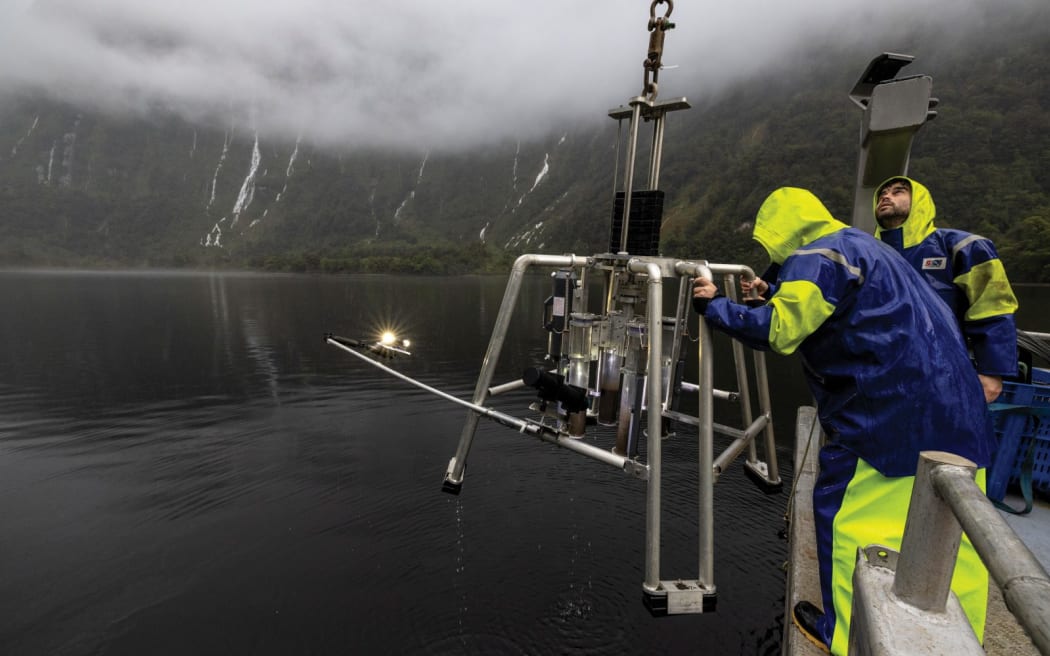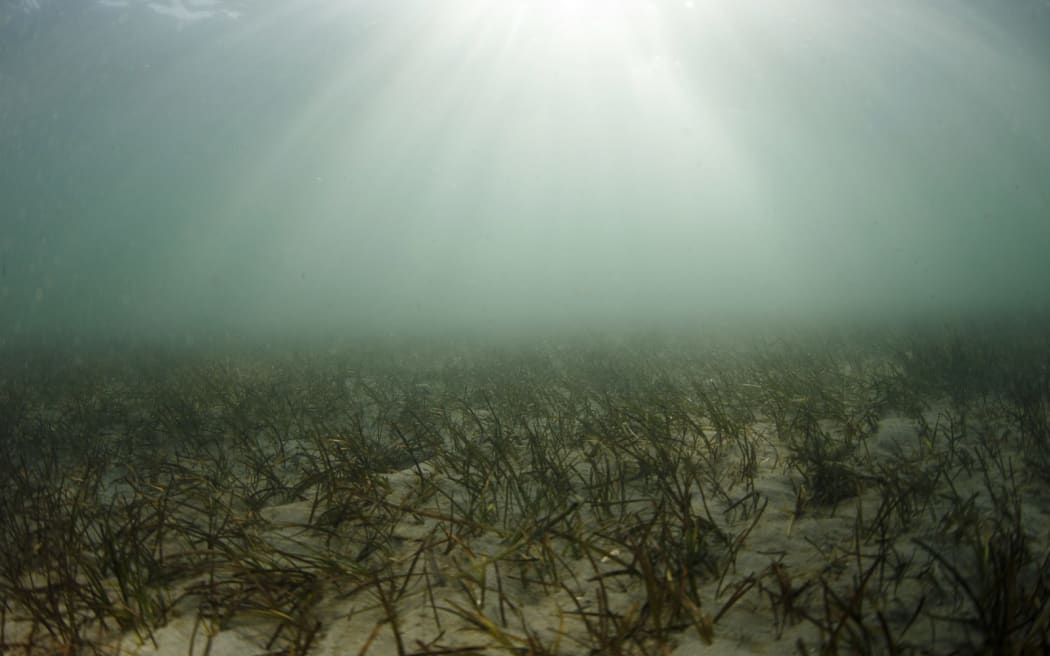
The multicorer – an instrument designed to take samples from the seabed while barely disturbing it – is carefully lowered into Doubtful Sound. Photo: © Richard Robinson
Follow Our Changing World on Apple Podcasts, Spotify, iHeartRADIO or wherever you listen to your podcasts
To avert the worst of the climate crisis we need to reduce our emissions. One way is to phase out fossil fuels, to leave forms of carbon like oil and gas locked up in the ground. But we can also look at ways to lock up more carbon, long term. And some options for this are in our oceans.
The champ of champs
Between 6–10 metres of rain falls in Fiordland each year. An incredible amount. It’s part of what powers the forest-to-fiord carbon storage pump that makes Fiordland exceptionally good at locking away large amounts of carbon long-term. Something scientists are only beginning to understand.
Return of the wetland
Luckily, National Park status on land and marine protection in part of the sea have meant that Fiordland has remained relatively untouched.
Not so for some of our other carbon-burying ocean ecosystems. Salt marshes and seagrass meadows in estuaries have taken big hits. But Te Whakapū o Waihī, a collective of local iwi and the Bay of Plenty Regional Council, are fighting back.
Listen as Kate Evans learns about Fiordland’s secrets, the plans to restore Waihī wetlands and estuary, and what this all means for our blue carbon potential.

Seagrass sways in the current at Snells Beach, north of Auckland. Its deep root system buries carbon in the seafloor, but only if the bed stays alive. Pollutants and sediment from land threaten the seagrass or block the light it needs to photosynthesise. Photo: © Richard Robinson
Learn more:
-
Read the accompanying New Zealand Geographic article by Kate Evans, with photography by Richard Robinson.
-
Listen to previous episodes of Voice of Tangaroa.
-
Alison Ballance previously reported on the work of the Cawthron Institute to collect and grow seagrass seeds.
-
Justine Murray joined Professor Kura Paul-Burke out on the Waihī estuary mud flats last year to learn about tohu (signs), nana (seagrass) and tuangi (cockles).
-
Parts of the Southern Ocean also acts as a carbon sink, but there are concerns this might change.

Photo: NZ On Air
Voice of Tangaroa is a joint production between RNZ’s Our Changing World and New Zealand Geographic.
Reporting for this series is Public Interest Journalism funded through NZ On Air. You can learn more and read the articles for free at www.nzgeo.com/seas

